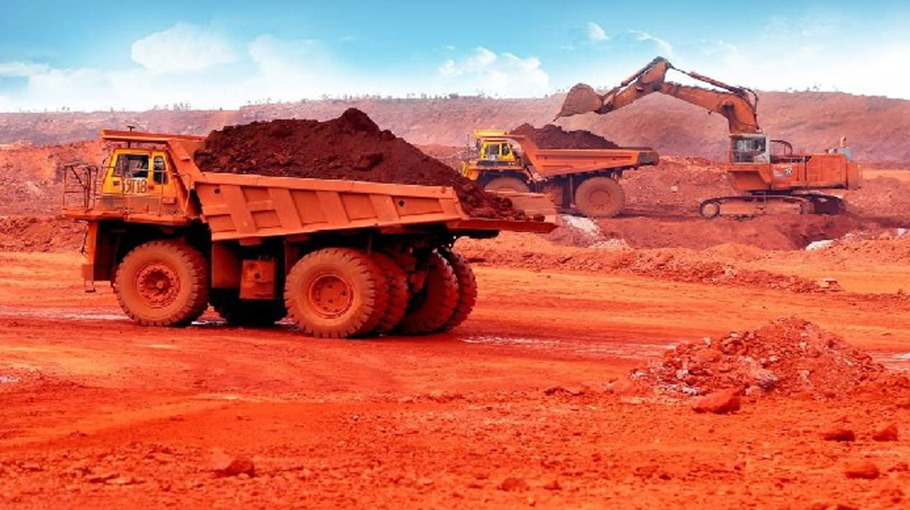India world’s 2nd largest aluminium producer, robust growth in production of key minerals

In a significant milestone, India has solidified its position as the world's second-largest producer of aluminium, reflecting the country's robust industrial growth and expanding capabilities in the non-ferrous metal sector. This achievement is underscored by the latest data from the first quarter of the fiscal year 2024-25, showcasing substantial growth in aluminium production alongside other key minerals like iron ore, limestone, and manganese ore.
In addition to being the 2nd largest aluminium producer, India is the 3rd largest lime producer and 4th largest iron ore producer in the world.
Continued growth in production of iron ore and limestone in the current financial year reflects the robust demand conditions in the user industries viz. steel and cement, the Ministry of Mines said on August 1, 2024 . Coupled with growth in aluminium, these growth trends point towards continued strong economic activity in user sectors such as energy, infrastructure, construction, automotive and machinery, the ministry added.
Provisional data released by the Ministry of Mines highlighted that primary aluminium production in India saw a commendable increase of 1.2% in the first quarter of FY 2024-25 compared to the same period last year. Production rose from 10.28 lakh tons (LT) in April-June 2023 to 10.43 LT in April-June 2024. This steady growth is a testament to the country’s strategic focus on bolstering its manufacturing and industrial sectors.
Several factors have contributed to India's rise in aluminium production. The country’s abundant bauxite reserves, coupled with advancements in mining technology and infrastructure, have played a crucial role. Additionally, the government's proactive policies and initiatives aimed at promoting industrial growth have provided the necessary impetus for this upward trajectory.
The robust demand from user industries such as energy, infrastructure, construction, automotive, and machinery has further fueled this growth. Aluminium, known for its lightweight and durable properties, is increasingly becoming a preferred material across these sectors, driving up production and demand.
India's position as the second-largest aluminium producer globally is a remarkable achievement. It places the country ahead of major aluminium-producing nations, reflecting its growing influence in the global non-ferrous metal market. China's dominance in aluminium production remains unchallenged, but India's rise signifies a shift in the global production landscape, with more countries now emerging as significant players.
The latest data also sheds light on the impressive performance of other key minerals. Iron ore production reached 275 million metric tons (MMT) in FY 2023-24, with a notable increase of 9.7% in the first quarter of FY 2024-25, rising from 72 MMT to 79 MMT. Similarly, limestone production, a critical component for the cement industry, grew by 1.8%, from 114 MMT to 116 MMT in the same period.
Manganese ore production also saw a significant jump, increasing by 11% to 1.0 MMT in FY 2024-25 from 0.9 MMT in the previous year’s corresponding period. These growth trends underscore the overall strength and resilience of India's mineral production sector.
The sustained growth in aluminium and other key minerals has far-reaching economic implications for India. It not only enhances the country’s industrial output but also boosts employment, contributes to GDP growth, and strengthens the country’s position in international trade.
The increased production capacity aligns with India's broader economic objectives of achieving self-reliance and reducing dependency on imports.
Technological advancements and innovation have been pivotal in driving the growth of the aluminium sector. The adoption of state-of-the-art mining techniques and the implementation of efficient production processes have significantly enhanced output. Furthermore, research and development initiatives focused on improving the quality and sustainability of aluminium production have yielded positive results, making Indian aluminium highly competitive in the global market.
Looking ahead, the future prospects for India’s aluminium industry appear bright. The government’s focus on infrastructure development and the push for electric vehicles are expected to drive further demand for aluminium. The ongoing investment in expanding production capacities and modernizing existing facilities will likely continue to bolster the sector’s growth.
Moreover, India’s ambitious target to increase its aluminium production capacity aligns with its broader vision of becoming a global manufacturing hub. With the expected rise in domestic and international demand, India is well-positioned to achieve this goal.
Events like IFEX 2024, the 20th International Exhibition on Foundry Technology, Equipment, Supplies, and Services, alongside the 72nd Indian Foundry Congress, provide an excellent platform for showcasing India’s advancements in aluminium production and other foundry technologies. These events attract industry leaders, experts, and businesses from around the world, offering opportunities for collaboration, innovation, and business growth.




